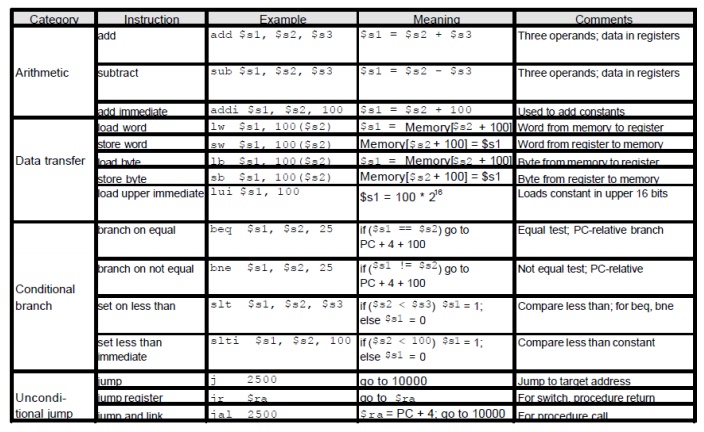Chapter: Computer Architecture : Overview & Instructions
Computer Architecture: Operations and Operands
OPERATIONS AND OPERANDS
Every computer must be able to
perform arithmetic. The MIPS assembly language notation add a, b, c instructs
a computer to add the two variables b and c and to put their sum in a. This
notation is rigid in that each MIPS arithmetic instruction performs only one
operation and must always have exactly three variables. For example, suppose we
want to place the sum of four variables b, c, d, and e into variable a.
The following sequence of instructions adds the
four variables:
add a, b, c # The sum of b and c is placed in a
add a, a, d # The sum of b, c, and d is now in a
add a, a, e # The sum of b, c, d, and e is now in a

Fig 1.5
MIPS Instructions
Thus, it takes three instructions
to sum the four variables. The words to the right of the sharp symbol (#) on
each line above are comments for the human reader, so the computer ignores
them.

Fig. 1.6
MIPS Operands
Related Topics